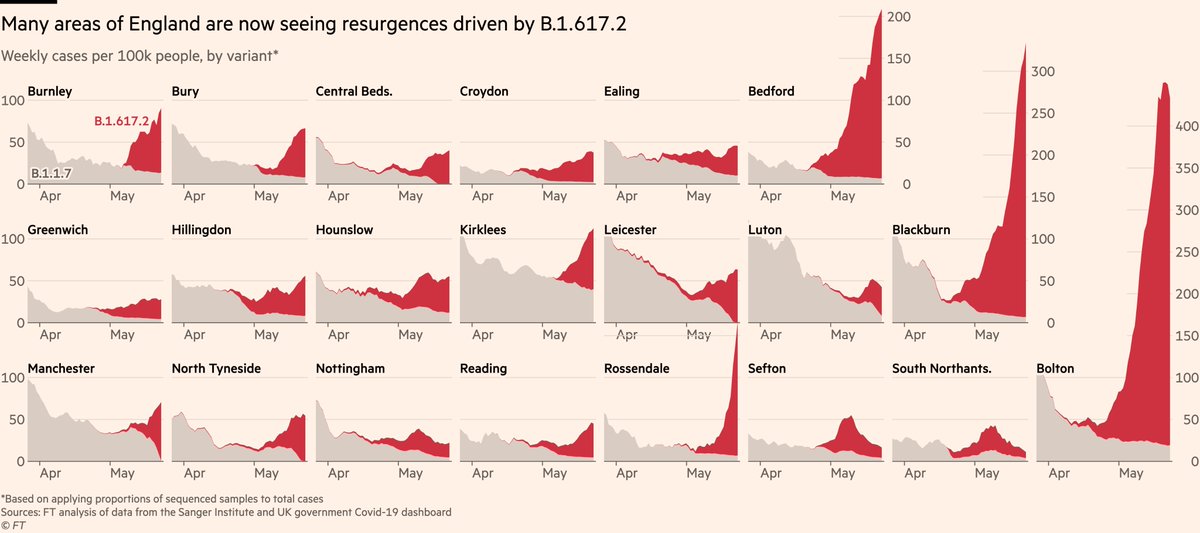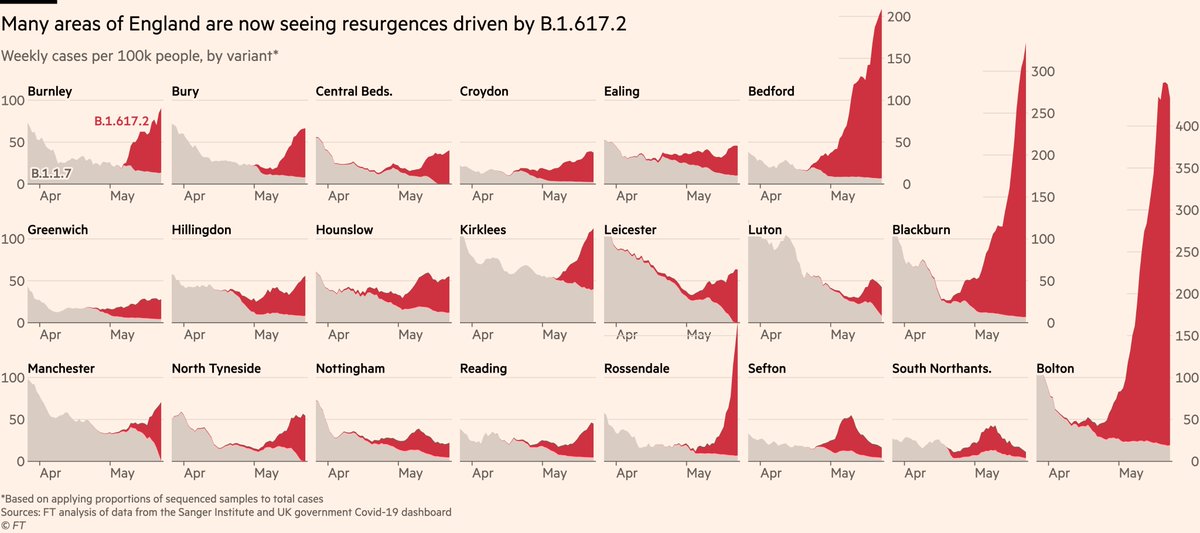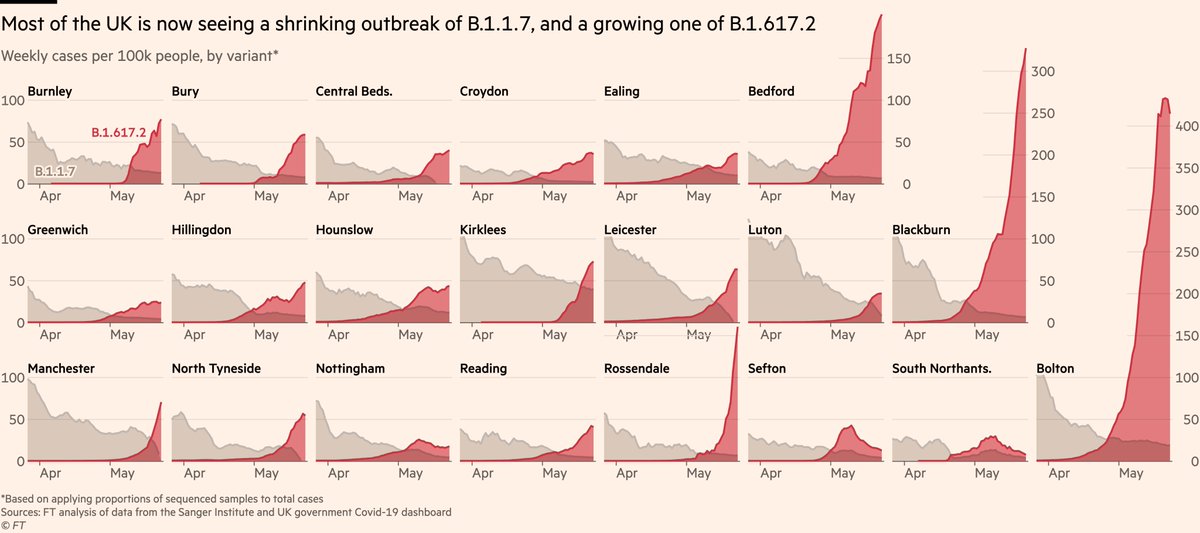
Excellent new study on how Pfizer fares against the different variants.
Conclusion remains: second dose is critical.
Conclusion remains: second dose is critical.
https://twitter.com/davidlvbauer/status/1400580669244428289
Some notes:
• Remember, antibody neutralisation is not the same as vaccine efficacy. 5.8-fold reduction in the former does not mean the same thing for the latter
• Remember, antibody neutralisation is not the same as vaccine efficacy. 5.8-fold reduction in the former does not mean the same thing for the latter
• This paper shows a 2.2-fold reduction in neutralisation for Delta relative to Alpha (5.9 / 2.6). PHE data so far points to a ~10% drop in VE for Delta vs Alpha after two doses of Pfizer, so you can see how the two numbers are on very different scales
• The authors include a very helpful plot (adapted from nature.com/articles/s4159…) showing how the relationship between the two metrics varies at different levels. The concern is that as neutralisation falls (moving left), the corresponding drop in VE rises (curve gets steeper)
https://twitter.com/davidlvbauer/status/1400582490490904581
• In other words, the same erosion of antibody neutralisation (due to age, time since jab etc), is likely to produce a larger drop in VE for an already-evasive variant than for a less evasive one
• This may strengthen the argument for booster jabs, for example
• Finally: for UK and other countries where Alpha has been dominant throughout vaccination period, it's the relative comparison between Delta & Alpha, not Delta & wild-type, that's the key one to focus on in terms of how it shifts the results we've experienced in recent months
• • •
Missing some Tweet in this thread? You can try to
force a refresh










